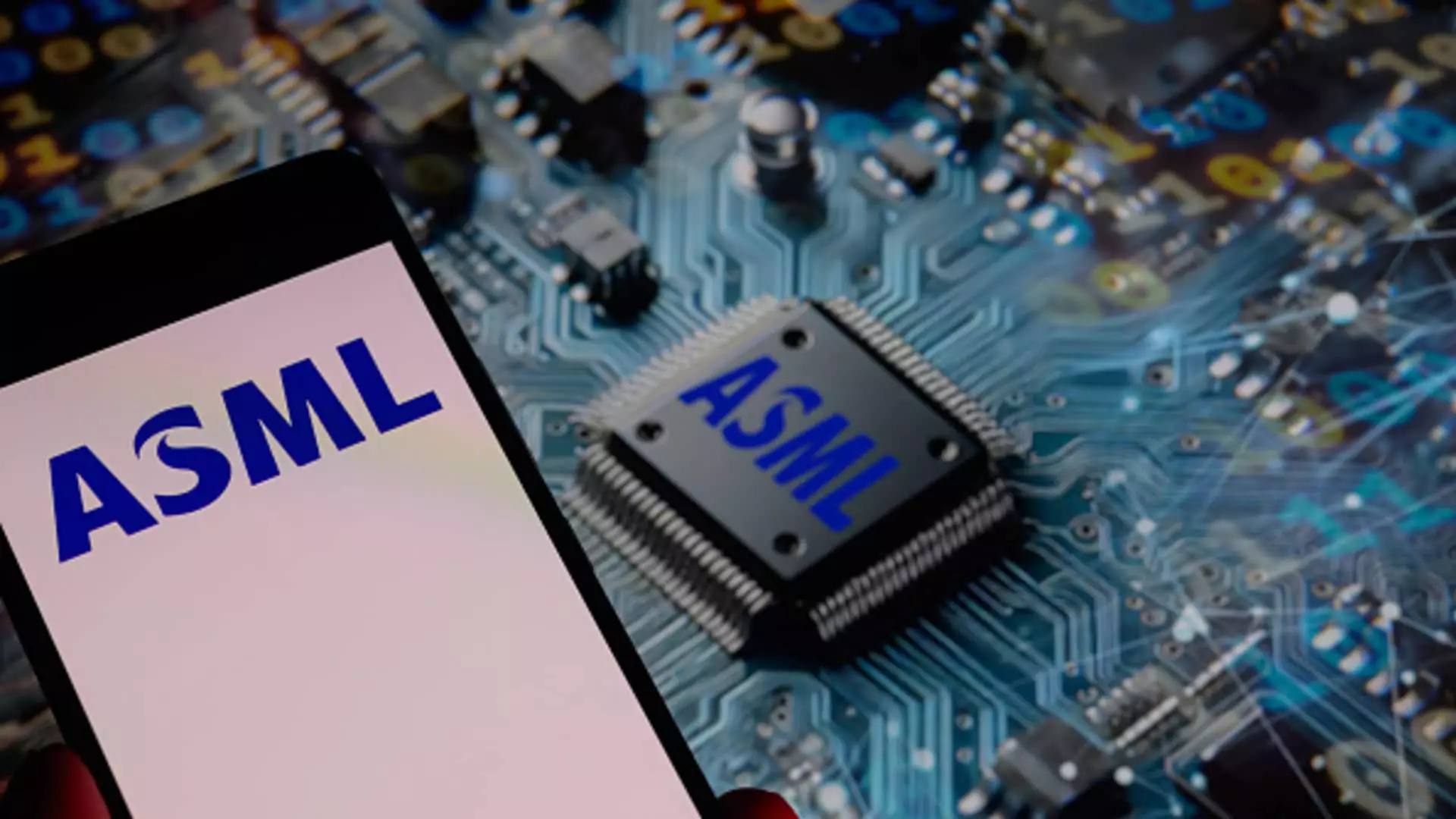The saga of ASML, a key player in the global semiconductor industry, is nothing short of a stark reminder of how vulnerable an industry can be to geopolitical tensions and economic uncertainties. Over the last year, ASML has seen its market capitalization plummet from a staggering $429.5 billion to just under $297 billion, wiping out over $130 billion in value. This situation primarily arises from stringent U.S. export limitations to China and ongoing tariff discussions. The critical question looms: how did ASML, a company celebrated for its innovative technology, find itself in such turbulent waters?
The Impact of Geopolitical Tension
The semiconductor sector rests on a precarious balance of international relations, and ASML, equipped with an exclusive ability to manufacture extreme ultraviolet (EUV) lithography machines, is arguably one of its most vulnerable links. Tariff threats from the U.S. and restrictions on exports to China have created a climate of fear surrounding the company, as it is unable to sell its most advanced machines to one of the largest consumer markets globally. This failure to penetrate the Chinese market not only compresses potential revenue streams but also galvanizes competitive voices calling for a more aggressive and protective stance on technology exports.
Companies like ASML are critical not just to their immediate supply chain but are also fundamental to the global advancements in technology—where innovations in artificial intelligence, for instance, depend heavily on their tools. The political landscape, therefore, is not just an external hurdle; it grows into a system that directly influences research and development priorities, demanding a re-evaluation of industry commitments to international partners.
Investor Sentiment and Market Volatility
The volatility of semiconductor stocks in recent months serves as a clear indicator of investor sentiment concerning ASML and its peers. With looming fears about potential over-investment in AI and a sluggish demand for chip manufacturing tools, many are left questioning the true stability of ASML’s growth trajectory. Investor confidence appears diminished, leading analysts like Stephane Houri to voice concerns that current market fears may not align with the actual demand.
Though ASML analysts retain a cautiously optimistic outlook—forecasting a potential price rebound to over 779 euros—the underlying apprehension reveals a deeper malaise. If the market outlook for semiconductor firms continues to be dictated by an unpredictable political landscape, then the trend may ultimately erode the base of consumer trust and confidence in the technology sector as a whole.
ASML’s Role in the Future of Technology
Despite these challenges, ASML’s pivotal role in the semiconductor supply chain remains undeniable. The forthcoming high numerical aperture (High NA) machines symbolize a leap in technology that has the potential to redefine chip manufacturing processes. Major companies like Samsung and Intel view ASML as indispensable for their next-generation chip-making initiatives, citing their unwavering commitment to advancing the forefront of technology. This a testament to ASML’s enduring significance even amid external pressures.
However, it raises a critical point: Can ASML pivot effectively in an environment where its sales are hamstrung by geopolitical issues? The expectation that the company will see diminishing returns from China over the next few years, as stated by CEO Christophe Fouquet, underscores a looming retraction in the company’s market operations, potentially paving the way for other industry players to exploit the void.
Concluding Thoughts on the Semiconductor Crisis
The challenges faced by ASML are emblematic of broader struggles within the semiconductor industry linked to national policies and market fluctuations. As investors grapple with uncertainty surrounding tariffs and export limitations, it becomes painfully clear that political stability will emerge as a crucial determinant of future technological advancements. The stakes are high; they go beyond profit margins, affecting innovation, economic growth, and the very fabric of trusting international collaborations.
In this complex tapestry, one must ponder: Is the semiconductor industry’s future sustainable in an environment rife with restrictions and tariffs, or will it continuously teeter on the brink of chaos? The coming years will be pivotal as governments and corporations search for a balance between protectionism and progress amidst these formidable challenges.

Leave a Reply